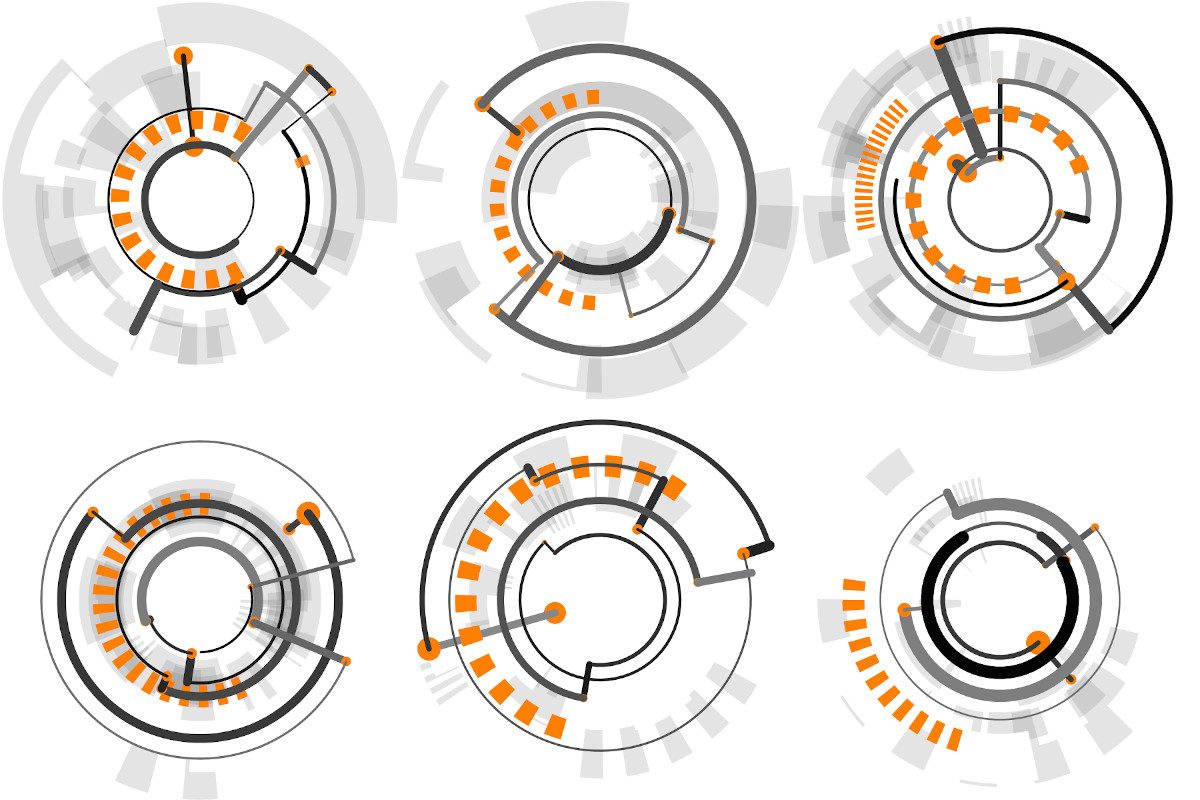Trajectorial Language

Trajectorial Language is a research I did on possible visualations of data in polar coordinates combined with other clues including colour, thickness and more.
A trajectory has a beginning, an end and an inbetween evolution, a language offers expressive power. The combination of these two concepts can synthesise information. But what information?
The visual clues are mainly parametrised around distance from center and angle; these are typical polar representations which, if you’ve seen them before, should immediately remind you of schematics of electrons jumping from one energy level to another. Here though, we connect them in the same way we would connect points in cartesian cohordinates to draw a segmented line, resulting in a history of changes, a short fabella (latine for short story) of how the subject evolved from the beginning to the end. Adding colours and thickness can introduce additional clues. Orange and grey are just my preference as I think they work very well together contrasting both in intensity and saturation.
I added some extra elements that appear as grey sectors behind the main graphic and orange sectors located at its same level; keeping the energy changes of electrons as a metaphor in mind, it made sense to add an element that could represent a radiation that escapes the system or, in other contexts, an interference from the outside in that particular moment, with a certain intensity and duration, or en event or, more in general, an exchange of information between the inside and the outside: a trans-diegesis.
The project is implemented as a generative tool in P5.js that can compose infinite mini-artworks. Readers are welcome to try it out at the link below.
Trajectorial Language @ Openprocessing.com
“The resulting constructions, despite their staticity, describe something with time, with an evolution of its state. Think of an electron jumping from state to state with different modes, realeasing radiations or absorbing external ones. Romanticising, I think of a life of a butterfly with all its daily activities from being born to flying, standing, sleeping and dying. I also love how these representation suggest round theatre architectures and arcane planimetries but also something mechanical like a see through watch.”
- Status: published
- Type: design research, online generative digital artwork
- Year: 2022











